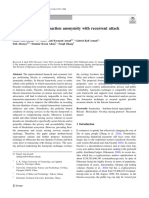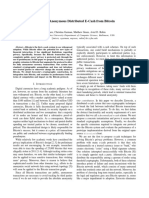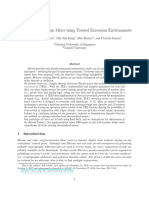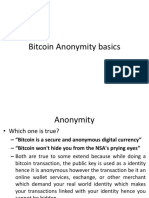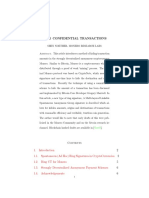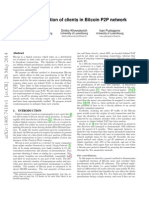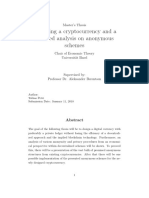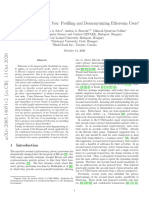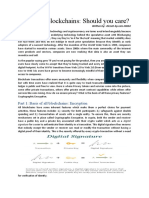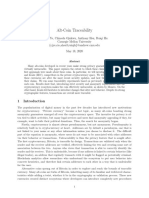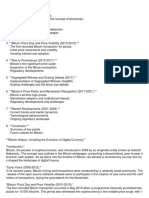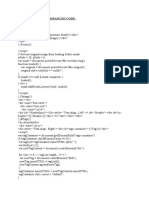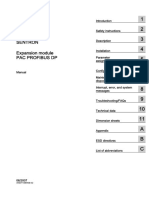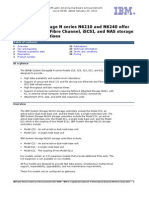0% found this document useful (0 votes)
27 views15 pagesBC Unit III Question and Answer
The document is a question bank for a course on Blockchain and Cryptocurrency, focusing on Bitcoin and anonymity. It includes a series of questions categorized into Part A and Part B, covering topics such as anonymity definitions, de-anonymization techniques, mixing concepts, and transaction analysis. The document also outlines the Bloom's taxonomy levels for the questions and provides a framework for understanding the complexities of Bitcoin anonymity.
Uploaded by
revathir.eecCopyright
© © All Rights Reserved
We take content rights seriously. If you suspect this is your content, claim it here.
Available Formats
Download as DOCX, PDF, TXT or read online on Scribd
0% found this document useful (0 votes)
27 views15 pagesBC Unit III Question and Answer
The document is a question bank for a course on Blockchain and Cryptocurrency, focusing on Bitcoin and anonymity. It includes a series of questions categorized into Part A and Part B, covering topics such as anonymity definitions, de-anonymization techniques, mixing concepts, and transaction analysis. The document also outlines the Bloom's taxonomy levels for the questions and provides a framework for understanding the complexities of Bitcoin anonymity.
Uploaded by
revathir.eecCopyright
© © All Rights Reserved
We take content rights seriously. If you suspect this is your content, claim it here.
Available Formats
Download as DOCX, PDF, TXT or read online on Scribd
/ 15

